Want to contribute to this article?
Robert Goodney is the quality manager of Berkshire-based Electronic Manufacturing Solutions Ltd.
Robert has over 3 decades of quality management experience across the services, IT, aerospace and manufacturing sectors, and as a BSI subcommittee member worked on the original transition from BS 5750 to the ISO 9001 series.
Robert is one of the thousands of quality professionals subscribed to the Qualsys blog.
We asked him to share his insight and experience with our readers.
He gave us 5 life rules for happier, more effective quality management.
1. Work for a business with the right priorities
Robert believes every business has 3 key priorities in this order:
- Customers
- Employees and their skills
- The bottom line
Putting them in the wrong order isn't only damaging for the business - it makes life miserable for the quality team.
Quality professionals are problem-solvers by nature, and modern quality management is built around the principle of satisfying customer requirements.
So allowing the bottom line to override quality demands and customer focus is the ultimate frustration for quality managers.
This is exactly what happened to Robert in a previous role at an aerospace organisation.
'Financial hurdles' were thrown in the way of demands for new measurement equipment, and the quality team was left without support from a boardroom that failed to appreciate the importance of quality.
This is a common trait in SME organisations, particularly family-run ones.They go into business to make money, and they're happy to support quality - until they see what they think is a bureaucratic nightmare coming up, which is ISO 9001.
If you keep hitting your head against the wall and can't get senior management to put customers first and invest in quality, don't be afraid to look for a business that does.
After leaving that role, Robert joined Electronic Manufacturing Solutions as its first quality manager - proof of a new commitment to quality from EMS leadership.
With Robert supported and listened to by top management, EMS has invested in:
- New and upgraded Mantis optical inspection equipment
- Additional automated optical inspection (AOI) review stations
- The adoption of new lean manufacturing techniques in 2020
The benefit of this quality- and customer-centric focus?
New customers, enhanced reputation, rapid revenue growth from £3.7m turnover in 2018 to £6.8m in 2019, and an engaged and active quality manager with fresh ideas for the future.
If you're at a business with the wrong priorities and there's really nothing you can do, find a business with the right ones.
Both you and your new employer will be happier for it!
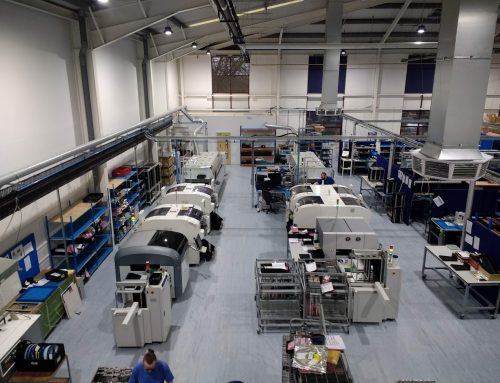
2. Don't chase ISO standards
Is this sacrilege to you?
For quality managers across the globe, getting an ISO certificate on the wall is a point of pride, a CV-booster and the culmination of months of hard work.
But for Robert, other than ISO 9001 there's something to be said for avoiding them where possible.
As Quality Assurance Manager at IBM, Robert performed frequent audits on suppliers.
They had a certificate on the wall. But I could tell within 15 minutes that their quality system wasn't running on the ground. Ultimately, it was just a piece of paper.
Businesses are putting more pressure than ever on their suppliers and probing deeper into potential defects. An ISO certificate could demonstrate a functional QMS. Or it could be unrepresentative of your entire business, masking underlying problems that a customer audit uncovers in minutes.
If this is the case, it's wasted time and money for the quality team.
Equally, you could be ploughing resource into meeting requirements which your customers don't actually have (see rule #1!)
As an example, EMS manufactures electronic products for a major medical device organisation. Robert could target ISO 13485 accreditation and certify that EMS produces electronic products suitable for a medical device manufacturer.
But since the bulk of the standard applies to the medical device business itself and not its suppliers, Robert found it more efficient and effective to apply laser focus only on his specific requirements as a supplier, and call them out in tenders and contractual requirements as and when a medical device prospect comes knocking.
You could argue that ISO standards unlock new markets - and of course they can.
But so can doing a good job and having satisfied reference customers: what Robert calls the 'natural' growth enjoyed by EMS over the past 2 years.
And if your business operates across multiple sectors, which standard do you target first? And how many do you draw the line at?
Instead of letting prospects force you down a particular ISO journey, splitting your QMS to target multiple standards and dedicating time and resource to a certificate which is only checked once a year, Robert recommends maintaining a simplified, singular ISO 9001 quality management system, meeting supplemental customer requirements ad hoc as they emerge.
This is all closely linked to rule #1: not letting top management's financial priorities supersede customer requirements.
Quality management is ultimately about eliminating waste and satisfying customers. Over-performing with ISO standards you don't need to snag a new customer creates the former and obstructs the latter.
I would prefer to only have a single standard: ISO 9001.
This doesn't mean ISO standards are worthless.
ISO 14001 and ISO 45001 are valuable frameworks for embedding environmental and OHS best practice.
If you operate in a specific niche sector, they're crucial for getting a foot in the door.
But always ensure you aren't getting a standard for the sake of it, and that the work you'll put into accreditation will deliver real value for you and your customers.

3. Leave the jargon behind
It's all very well me talking about APQP, but the shop floor staff won't know what it is.
Quality professionals live in a world of acronyms: ISO, APQP, CAPA, FMEA, 8D, and so on and so on.
If you want to drive real change and improvement at all layers of your business, it's simple - escape the acronyms.
Robert calls this process 'translating'.
Electronic Manufacturing Solutions are in the process of embedding lean manufacturing and Six Sigma principles into their operation to become even stronger and more efficient in 2020.
For Robert, it's a case of phrasing these initiatives in a way that every member of the team will understand and engage with.
Not everyone in your business will respond if you explain Six Sigma techniques and objectives to them. But everyone understands wasted time and work, and your efforts to help cut them out.
So speak in layman's terms!
4. Give processes back to the people who use them
Nobody likes finger-pointing.
A blame culture creates disengaged workers, blocks continuous improvement and builds an 'us and them' wall between quality and the rest of the business.
So how can quality managers fix problems without getting workers' backs up?
Robert recommends focusing attention on processes, not people.
By exploring what went wrong with a process rather than a particular fault by a member of staff, you're far more likely to secure engagement and collective responsibility from the people following that process.
In turn, senior management are more likely to agree to process change requests straight from relevant personnel, rather than from a quality manager who isn't directly involved in that process day-to-day.
As an example from Robert:
Yesterday someone from production came to me and said, "I have an idea to consolidate these 4 forms into 1".
They didn't use to know who to request changes like this from, or how.
But now, because we've assigned process ownership and educated people about process management, quality is invited into process discussions - and we've got a growing list of requested changes.
In short: empower your colleagues to own the processes that guide their work. You're more likely to see raised hands and hear valuable suggestions and comments.
5. Don't isolate quality
What do the first 4 rules all have in common?
Integrating quality, as much as you possibly can and with the fewest barriers, with the core business goal of satisfying your customers.
People think I manage quality. I don't. I manage the business.
If you look after business processes and procedures, they'll look after your quality.
That's why we call ours a business management system, not just a quality management system.
Communicating quality and how it aligns with the rest of the business is crucial to Robert's approach.
If your quality manual is sat collecting dust on a shelf, staff will just follow the same habits they've always followed - which is why one of Robert's objectives for 2020 is to build on EMS' electronic business management system document repository, so all EMS staff to access the latest policies, procedures and information from a single source of truth.
Use posters, shop floor visits and plain English to make quality a living thing, and a tool to help your colleagues.
And above all, don't let quality become isolated from the rest of your business.
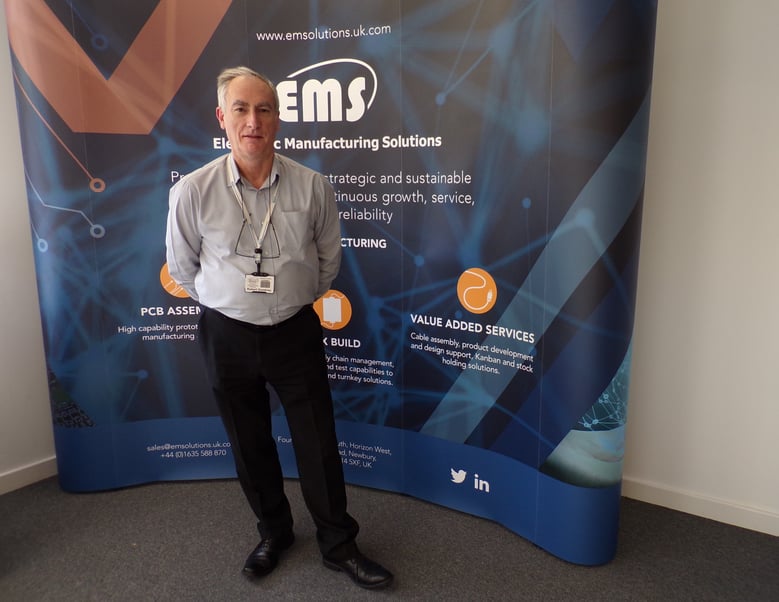
Further reading
Looking for a tool to align your manufacturing business with quality?
Download our manufacturing quality management software datasheet:




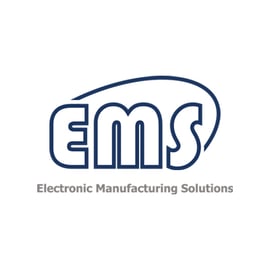
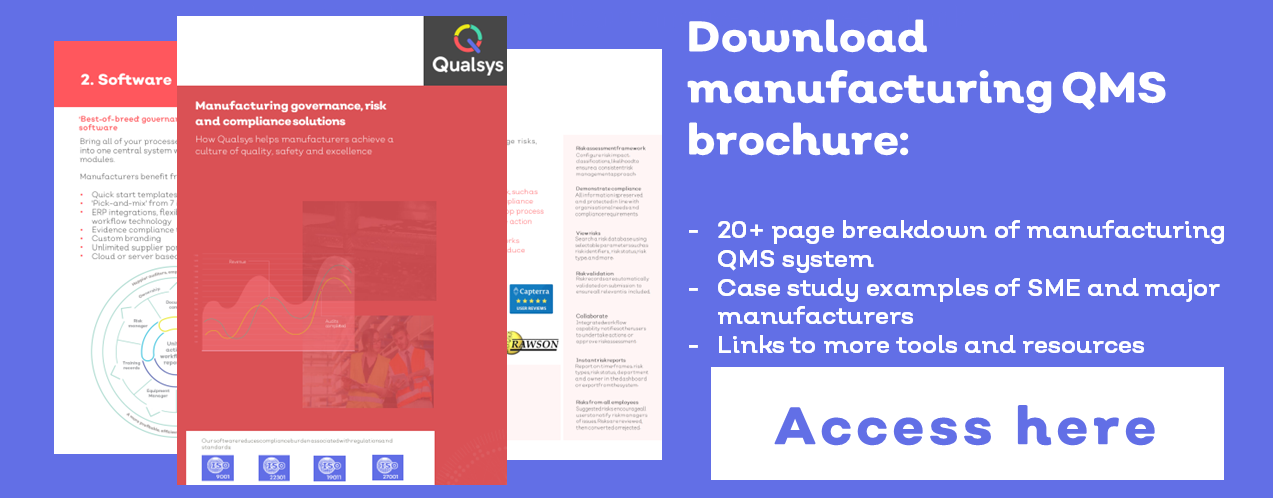
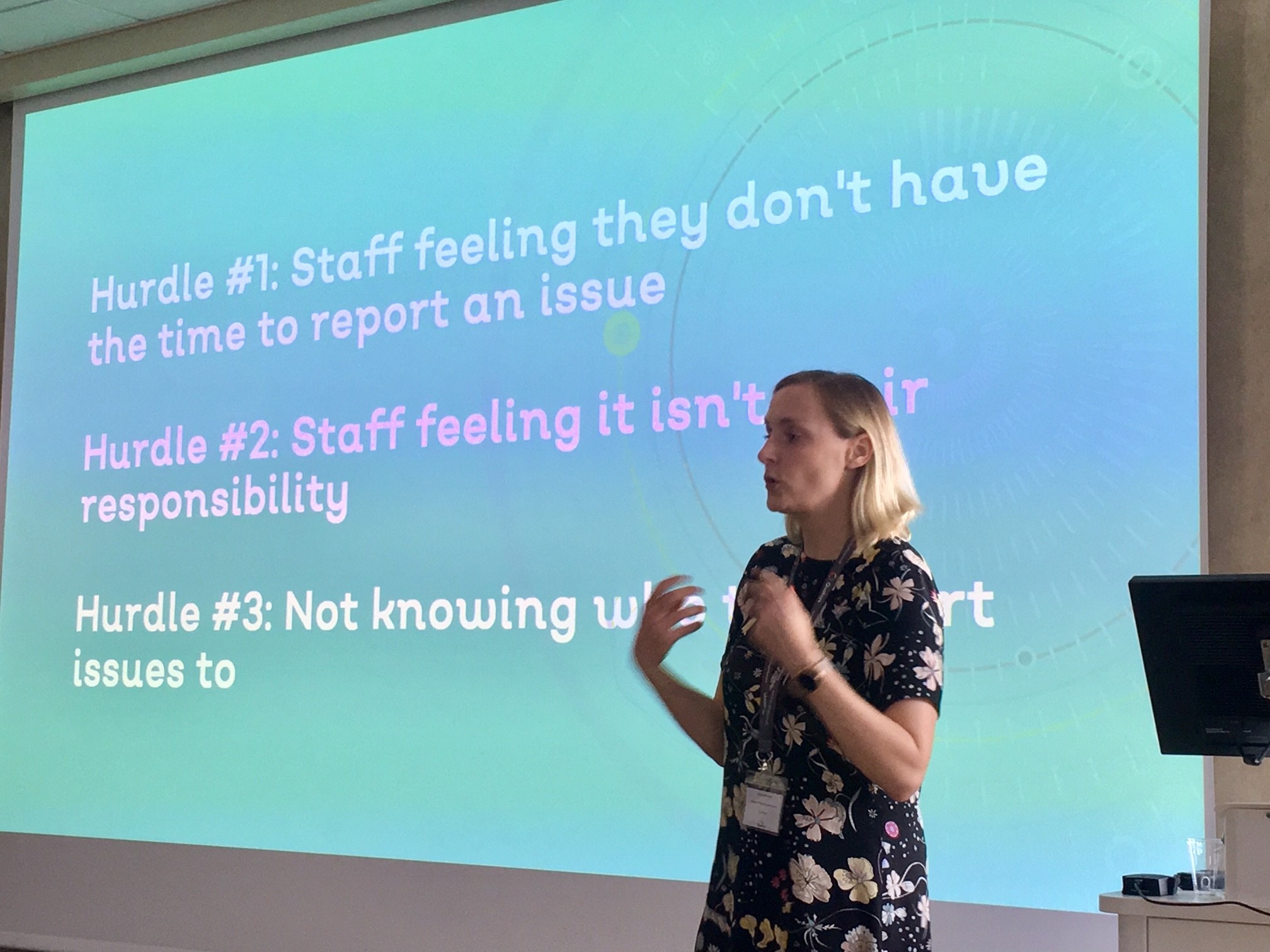



Share your thoughts on this article